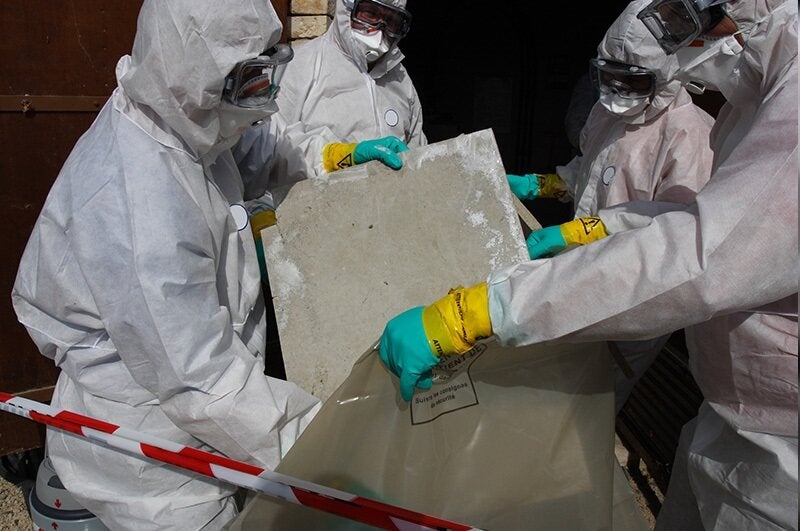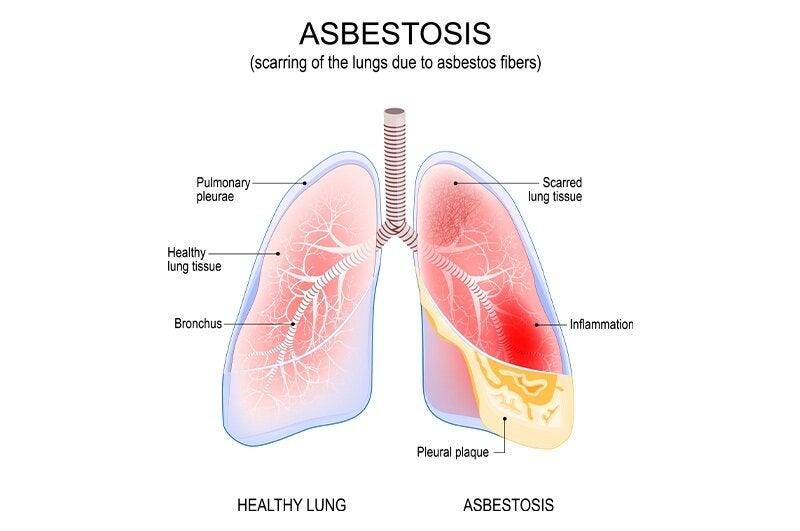ACM Testing: Recognizing Asbestos Warning Signs

ACM Testing: Identifying Asbestos Signs
Asbestos-containing materials (ACM) can cause several safety concerns to be aware of in the event of asbestos exposure. Breathing in asbestos fibers can lead to health conditions like asbestosis, lung cancer, pleural disease, and mesothelioma. So, addressing potential exposure through ACM testing before it causes serious problems is critical.
ACM testing allows for ACM identification, meaning you can address the causes of ACM and find the solutions you need to treat this issue. But what is asbestos, what are the signs of ACM, and what else should you know? Read more to find out!
Understanding Asbestos and ACM Testing
Asbestos is a mineral fiber often found in rock and soil known for its resistance to electricity, heat, and corrosion. The mineral is commonly used in insulation, fireproofing equipment, and hazardous building materials like roofing, floor and ceiling tiles, and cement products because of its resilience.
However, asbestos causes poor indoor air quality, and asbestos in homes can lead to serious health issues that make this mineral fiber highly dangerous for homes. Most notably, asbestos leads to illnesses like lung cancer and mesothelioma, making ACM testing a necessity for safety.
Visible Signs of ACM
Promoting ACM awareness is possible when you understand and look for the visible signs of ACM in buildings. The following are some of the most notable visible signs of asbestos in homes:
- Aging or deteriorating building materials can release asbestos fibers into the air, violating modern ACM regulations. For example, older vinyl floor tiles may contain asbestos; if they are cracked or damaged, they can release fibers. Textured ceilings commonly contain asbestos, so ACM testing is crucial if your property has these ceilings.
- Deteriorating insulation materials also cause ACM exposure. The insulation used in pipes, attics, and other home areas deteriorates as they age, releasing asbestos fibers. You can notice this deterioration in insulated areas with visible wear and damage.
- Past renovations can also cause asbestos fibers to be released into the air. Buildings renovated before the 1980s, when asbestos use became banned in several regions, might have asbestos in building materials. Look for information on previous renovations in your building to determine whether asbestos is present.


Health Risks and Asbestos-Related Diseases
Understanding asbestos-related diseases and the potential health risks associated with asbestos exposure is crucial to keeping your property and yourself safe. Below are the health risks and symptoms related to asbestos that make ACM detection so important.
Asbestosis
Asbestosis is a lung disease caused by asbestos exposure and inhalation. When exposed to asbestos, such as at home or work, the material causes lung tissue scarring. Symptoms of asbestosis include chest pain, shortness of breath, persistent coughing, dry and cracking sounds in the lungs when inhaling, clubbing of the fingers and toes, and loss of appetite.
Lung Cancer
Prolonged asbestos exposure can also lead to lung cancer, making asbestos abatement procedures vital. Symptoms of lung cancer include constant coughing that doesn’t go away, chest pain, wheezing, coughing up blood, exhaustion, weight loss, and shortness of breath.
Pleural Disease
Pleural disease, or pleural effusion, occurs when there is a sudden buildup of fluid between the tissue layers lining your chest cavity and lungs. Exposure to asbestos makes the likelihood of developing pleural effusion more significant. This disease includes symptoms like chest pain, dry coughing, shortness of breath, labored breathing, orthopnea, or the inability to breathe comfortably unless sitting or standing upright.
Mesothelioma
Asbestos exposure commonly leads to mesothelioma, a type of cancer located in the layer of tissue covering your internal organs. This condition is severe and deadly, making it crucial to minimize your asbestos exposure. Symptoms of mesothelioma include painful coughing, shortness of breath, weight loss, trouble swallowing, and lumps of tissue under the skin of your chest.


When to Consider ACM Testing
So, when is an asbestos risk assessment necessary to keep your property safe? If you’re concerned about asbestos in your home, you might want to consider an ACM inspection. Consult the following checklist to determine whether ACM testing is necessary:
- Check the age of your building. Buildings built or renovated before the 1980s are likelier to contain asbestos.
- Look for the visible signs of asbestos-containing materials. Textured “popcorn” ceilings, vinyl floor tiles, and worn insulation pipes all indicate potential asbestos exposure.
- Look into your building’s construction history. ACM testing should be considered if your property has undergone renovations or construction with unknown materials.
- Look for visible dust accumulation. Visible dust in areas with ACM should be tested to assess exposure risks.
- Check any asbestos cement products. Cracks or damage to asbestos-containing products like roofing, siding, and pipes could release asbestos fibers that require testing.
- Identify occupant health concerns. If any occupants are experiencing respiratory issues that other causes cannot explain, ACM testing is crucial to protecting occupant health.
Professional ACM Testing Process
Safe asbestos removal is crucial to protecting your property and protecting your health. A professional service like Deslauriers can provide ACM abatement procedures and eliminate asbestos-related environmental hazards.
Asbestos testing from Deslauriers typically involves the following steps, which may vary depending on the ACM testing methods used for your property:
- Sample collection: During the first step of ACM testing, a professional inspector from Deslauriers will select sample locations based on areas where asbestos is likely present. The professional will use a tailored air sampling pump to draw air through a filter and collect asbestos fibers in the sample area. Sampling time might range from 1 to 8 hours.
- Calibration: The air sampling pump used for testing will be calibrated before and after the sampling process to ensure accurate sampling.
- Lab analysis: After the sample is collected, a professional service like Deslauriers will send the sample for a lab analysis that identifies the presence of asbestos.
- Results: The lab analysis will provide helpful results and information that professionals can interpret based on asbestos regulations. This interpretation will determine whether the air quality is safe. If asbestos exposure is determined to be a risk, a professional service can help with safe asbestos removal procedures.
Get Professional ACM Testing from Deslauriers
Following proper ACM safety guidelines is possible when you get ACM testing and testing products from Deslauriers. Deslauriers provides the best ACM testing products to ensure a comprehensive and helpful assessment of your property and identify potential asbestos exposure. Explore our testing products today!
- Impalement Protection with OSHA-Compliant Rebar Caps
- Protecting Worksites from Dropped Object Hazards: Essential Tools for Elevated Safety
- 5 Ways to Use the Vers-A-Scoop (Beyond Just Masonry Work)
- Deslauriers: Leading the Way in Sustainable Manufacturing
- 5 mistakes to avoid when using concrete test scoop
- Construction materials
- shims
- shims in construction
- concrete
- construction
- Steel columns
- Building support structures
- Structural design
- Types of steel columns
- H-beams
- I-beams
- Pipe columns
- Box columns
- Steel-concrete composite columns
- Construction projects.
- Concrete Column Form
- Concrete Column Form Rent
- Buy Concrete Column Forms
- Construction temperature control
- Thermostatic technology
- Concrete curing
- Temperature regulation
- Construction equipment
- Advanced curing techniques
- Concrete strength optimization
- Structural integrity
- Construction safety
- Composite wood shims
- construction shims
- durability of composite shims
- Lifting Handle Guide
- Lifting Handle best practices
- Dowel Caps
- Concrete Placement in Construction
- Construction Efficiency
- Concrete Placement in Construction Projects
- sustainable construction
- cost-effective building materials
- sustainable building benefits
- environmental impact
- on-site training
- deslauriers services
- construction training
- Equipment Maintenance
- Testing Equipment Care
- Rust Prevention
- Compression Testing Equipment
- Equipment longevity
- column formwork
- concrete formwork

